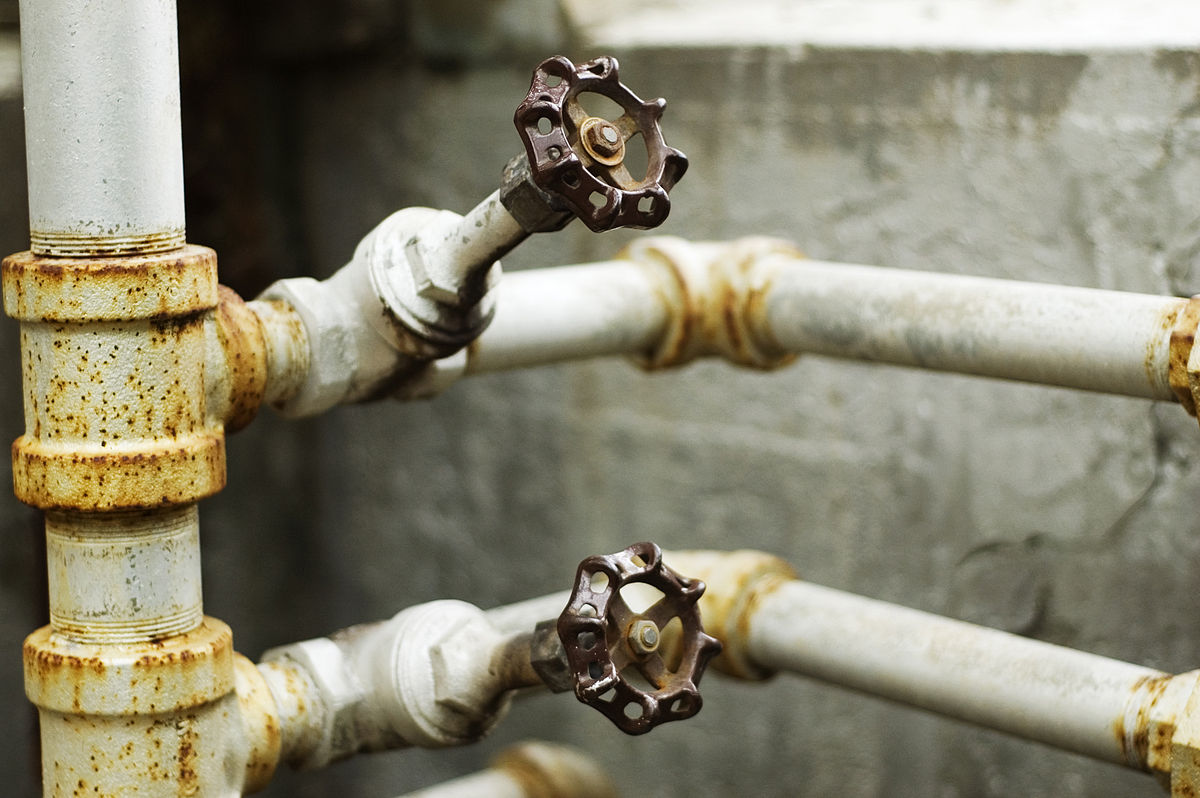Valves
Valves are mechanical devices that control the flow of fluids such as gas, liquid, fluidised solids, slurries, and so on, by opening, closing or partially obstructing a passage.
Some common household examples of valves include:
- A tap that when turned opens a valve to release pressurised water.
- A toilet that when flushed opens two valves – one that allows water to escape, and another that refills the toilet with more water.
- A gas cooker hob that opens a valve to allow more gas to increase the flame size.
Simple valves are typically made up of several parts; a solid metal outer casing, a rubber or plastic inner seal, and a body which opens and closes, fitting into a seat.
An automated or manual mechanism is used to open and close valves. For high-pressure flow pipework, opening and closing manually can be physically difficult, often requiring a long lever or large wheel. Big valves can be operated using hydraulic rams.
There are several different types of valves, including:
- Ball valve: A hollowed-out ball sits inside a pipe obstructing the flow and swivelling through 90-degrees when turned.
- Butterfly valve: A disc sits inside a pipe and swivels sideways or upright.
- Cock or plug: A cone-shaped plug moves to one side when a wheel or handle is turned.
- Gate or sluice: Metal gates are lowered across pipes, usually only capable of being fully open or fully closed.
- Globe: When turned a valve is screwed in, such as with a tap.
- Needle: A long, sliding needle regulates fluid flow, such as in central heating systems.
- Spool: Valves slide backwards and forwards to direct fluid flow around a pipe circuit, such as in hydraulic systems.
For more information see: Types of valve.
[edit] Related articles on Designing Buildings
- Actuator.
- A guide to installing thermostatic mixing valves: what, why and how.
- BSRIA announces 2021 European HVAC field device study.
- BSRIA publishes new edition of BG29.
- BSRIA study: The market for European Field Devices.
- Closed Systems Control Association.
- Control valve.
- Differential pressure control valve.
- Float valve.
- Gasket.
- Mechanical, electrical and plumbing MEP.
- Pipework.
- Pipework defects, ventilation and airflow rates.
- Pressure independent control valves.
- Pressure-relief valve.
- Stop valve.
- Tap.
- Thermostatic mixing valve.
- Types of valve.
- Water hammer.
- What makes a good PICV?
Featured articles and news
The history of building regulations
A story of belated action in response to crisis.
Moisture, fire safety and emerging trends in living walls
How wet is your wall?
Current policy explained and newly published consultation by the UK and Welsh Governments.
British architecture 1919–39. Book review.
Conservation of listed prefabs in Moseley.
Energy industry calls for urgent reform.
Heritage staff wellbeing at work survey.
A five minute introduction.
50th Golden anniversary ECA Edmundson apprentice award
Showcasing the very best electrotechnical and engineering services for half a century.
Welsh government consults on HRBs and reg changes
Seeking feedback on a new regulatory regime and a broad range of issues.
CIOB Client Guide (2nd edition) March 2025
Free download covering statutory dutyholder roles under the Building Safety Act and much more.
AI and automation in 3D modelling and spatial design
Can almost half of design development tasks be automated?
Minister quizzed, as responsibility transfers to MHCLG and BSR publishes new building control guidance.
UK environmental regulations reform 2025
Amid wider new approaches to ensure regulators and regulation support growth.
The maintenance challenge of tenements.
BSRIA Statutory Compliance Inspection Checklist
BG80/2025 now significantly updated to include requirements related to important changes in legislation.
























Comments